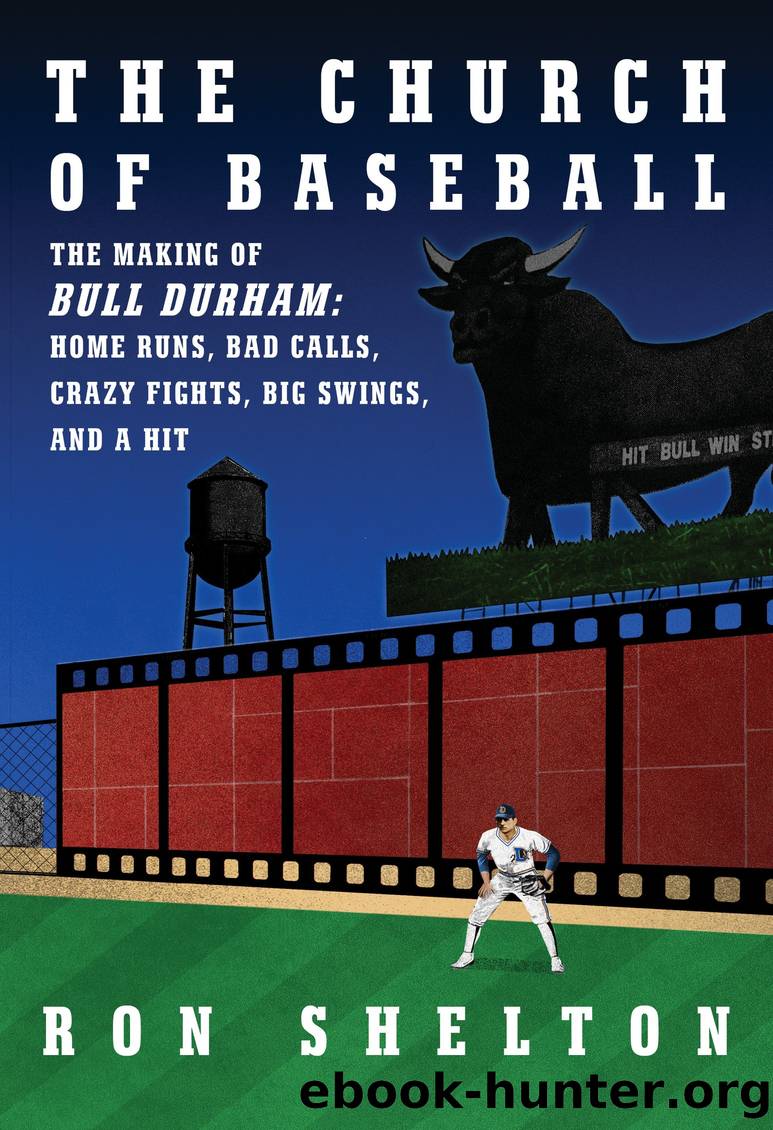The Church of Baseball by Ron Shelton

Author:Ron Shelton [Shelton, Ron]
Language: eng
Format: epub
Publisher: Knopf Doubleday Publishing Group
Published: 2022-07-05T00:00:00+00:00
Part Two
Preproduction
9
Building the Toy Train Set
Orson Welles famously said, when he first set foot on the lot at RKO to begin prepping Citizen Kane, âThis is the biggest electric train set a boy ever had.â In the hopes that I would have the chance to build my own toy train set, I had offered a job as my assistant to my former college English professor. Leonard Oakland had a PhD in English and was the man who, twenty years earlier, had inspired me to read. He had also introduced me to foreign films. As luck would have it, he happened to be in Los Angeles (from Spokane, Washington) on a one-year sabbatical from teaching. A directorâs assistant is a low-paying, thankless job, running errands, typing script revisions well past midnight, driving the director to the set, grabbing a coffee, finding the bar that sells the right Scotch or gin, and listening to a lot of howling at the moon. The main perk is being close to all the bloodshed and fun, with a front-row seat to the sausage making. He took the job, and I planned to pay him the pittance of a salary out of my pocket until the movie was either financed or had died on the vine. Leonard kept notes.
While weâd been shopping the script, Mark Burg had worked up a budget of $4 million âbelow the lineââwhich means all the hard costs of shooting and editing the movie. In addition, there was $3.5 million in âabove the lineâ costs, which covered cast, script, director, and producers, and another $1 million for the 10 percent contingency and bond.
The first crucial position to fill was the director of photography. The DP is responsible for not only photographing the film, but also supervising the camera department, with its hierarchical staff of camera operators, focus pullers, various assistants, and trainees. The director and DP work very closely to determine what the film should look like; the creative desires are always at war with the shooting schedule and the demands and limitations of the budget. John Alcott, who had offered to shoot my first movie (and coincidentally had shot No Way Out), had recently died of a heart attack at the age of fifty-five while in Cannes. I was nervous about the number of script pages set for night exteriors and how slow that work would be. I had hoped to get Alcott not only for his sheer brilliance, but also because of how efficiently heâd handled the night work on Under Fire in remote areas of southern Mexico.
Someone recommended a young DP named Charles Minsky, and we hired him after I screened some of the Amazing Stories, a TV series heavy on night exteriors, which heâd shot for Steven Spielberg. Since the budget was tight, heâd have to build a crew out of locals and people from Wilmington, North Carolina, where Dino De Laurentiis had set up a studio. Budget and cast/crew availability drove a lot of decisions, but it also forced us to look past the usual suspects to emerging talent.
Download
This site does not store any files on its server. We only index and link to content provided by other sites. Please contact the content providers to delete copyright contents if any and email us, we'll remove relevant links or contents immediately.
The Kite Runner by Khaled Hosseini(5079)
Gerald's Game by Stephen King(4570)
Dialogue by Robert McKee(4321)
The Perils of Being Moderately Famous by Soha Ali Khan(4169)
The 101 Dalmatians by Dodie Smith(3451)
Story: Substance, Structure, Style and the Principles of Screenwriting by Robert McKee(3394)
The Pixar Touch by David A. Price(3361)
Confessions of a Video Vixen by Karrine Steffans(3240)
How Music Works by David Byrne(3181)
Fantastic Beasts: The Crimes of Grindelwald by J. K. Rowling(2994)
Harry Potter 4 - Harry Potter and The Goblet of Fire by J.K.Rowling(2984)
Slugfest by Reed Tucker(2936)
The Mental Game of Writing: How to Overcome Obstacles, Stay Creative and Productive, and Free Your Mind for Success by James Scott Bell(2844)
4 - Harry Potter and the Goblet of Fire by J.K. Rowling(2650)
Screenplay: The Foundations of Screenwriting by Syd Field(2572)
The Complete H. P. Lovecraft Reader by H.P. Lovecraft(2511)
Scandals of Classic Hollywood: Sex, Deviance, and Drama from the Golden Age of American Cinema by Anne Helen Petersen(2463)
Wildflower by Drew Barrymore(2441)
Robin by Dave Itzkoff(2380)
